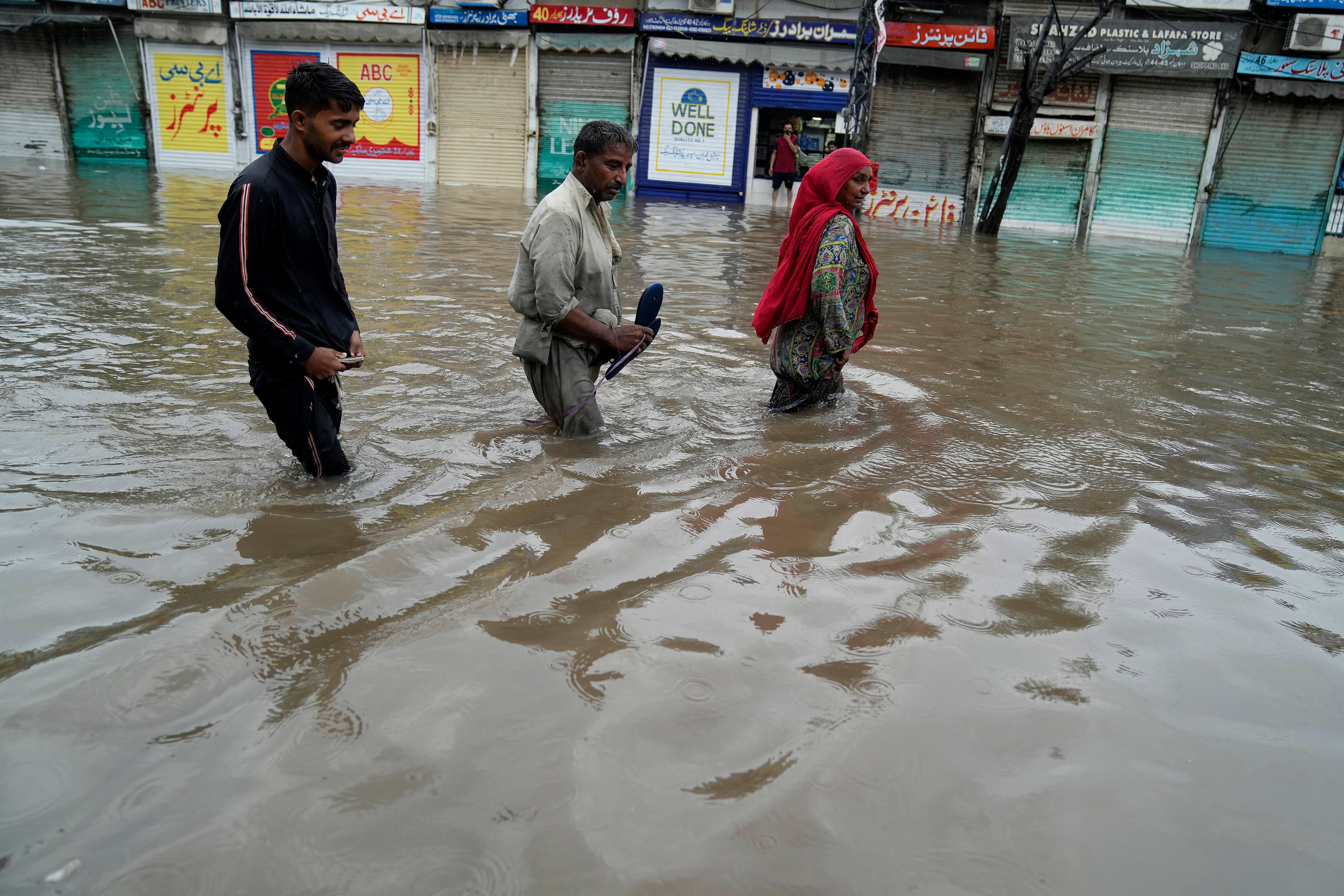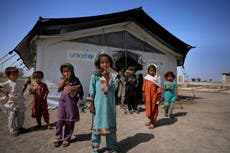At least 55 dead as Pakistan hit by monsoon floods again one year after historic deluge
Majority of deaths have been reported due to collapsing roofs and electrocution, officials said

Days of heavy monsoon rains have inundated Pakistani cities once again, killing at least 55 people and hitting vulnerable communities still recovering from last year’s historic deluge.
The monsoon rains that started in the last week of June have have triggered flash floods, with the eastern city of Lahore seeing a record-breaking downpour on Wednesday, flooding many streets and disrupting normal life.
Authorities said the number of dead in the past two weeks has risen to 55, with 12 people, including eight children, killed on Thursday. At least 87 people were injured during this period.
“Fifty deaths have been reported in different rain-related incidents all over Pakistan since the start of the monsoon on 25 June,” a national disaster management official said.
The majority of deaths have been attributed to collapsing roofs and electrocution, officials said.
At least eight children died in a massive landslide that hit Shangla, a district in the northern Khyber Pakhtunkhwa province bordering Afghanistan, officials said. As of Thursday, rescuers were still trying to remove a large mud pile for fear that other missing children were buried.
Pakistan’s second-largest city Lahore, in Punjab province, received record-breaking rainfall on Wednesday, turning roads into rivers and leaving almost one-third of the residents without electricity and water.
Photos and videos on social media show key infrastructure like roads, bridges and hospitals inundated with water after just a few days of rainfall at the beginning of monsoon season.
Pakistan’s weather forecast agency warned of more rain to hit the city as monsoon season has just begun in South Asia.
The department has warned that the Punjab region along the biggest rivers in the country could face more intense flooding in the coming days as rivers overflow.
The province’s disaster management authority said on Friday it was working to relocate people living along the waterways.
Every year, the region receives approximately 70-80 per cent of its annual rainfall during this season. Meteorologists in the region say the monsoon is becoming increasingly erratic with more rainfall falling in shorter periods due to the human-induced climate crisis, leading to increased flooding.
Last year, Pakistan’s historic floods left one-third of the country underwater and killed over 1,700 people, causing damages estimated at $30bn. Lives for many people in large parts of southern and northern Pakistan was severely disrupted, with tens of thousands of people internally displaced.
Scientists said the intensity of the deluge was increased by climate crisis, although infrastructural vulnerabilities also exacerbated the impact.
Join our commenting forum
Join thought-provoking conversations, follow other Independent readers and see their replies
Comments


Bookmark popover
Removed from bookmarks